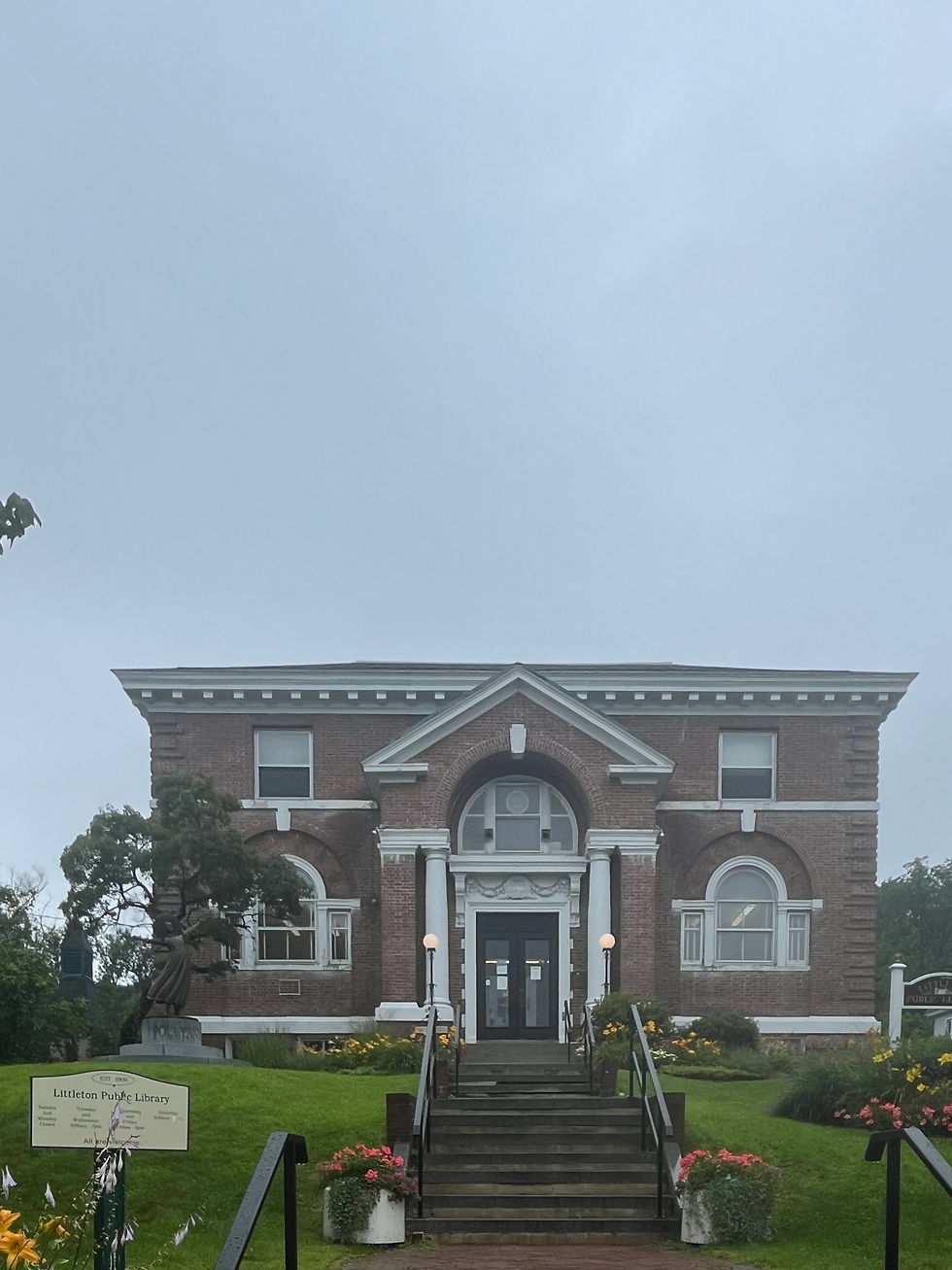Day 52, Friday, April 19: Golden, Colorado
- Mark Carl Rom
- Apr 18
- 3 min read
Carnegie libraries visited: John "Thunderbird Man" Emhoolah, Jr. Branch Library, Denver, Colorado

I popped into Denver to visit the John "Thunderbird Man" Emhoolah, Jr. Branch Library. One of the city libraries funded by Carnegie, it had previously been called the Byers Branch.
Both names have local significance. William Byers had founded The Rocky Mountain News in 1859. It was the first newspaper in Colorado (sadly, it went under in 2009). His wife, Elizabeth, was active in local charitable organizations. In 1864, the U.S. Army slaughtered some 150 individuals while destroying a Cheyenne and Arapahoe encampment (the estimates range from 60 to 600) in what came to be known as the Sand Hill Massacre. Byers published several editorials defending the attack, and even as late as 1880 he wrote that "Sand Creek saved Colorado, and taught the Indians the most salutary lesson they had ever learned." An 1865 investigation by the congressional Joint Committee on the Conduct of War came to an entirely different conclusion:
Wearing the uniform of the United States, which should be the emblem of justice and humanity; holding the important position of commander of a military district, and therefore having the honor of the government to that extent in his keeping, [Colonel Covington] deliberately planned and executed a foul and dastardly massacre which would have disgraced the veriest savage among those who were the victims of his cruelty.
In the early 2020s, following the George Floyd protests, advocates for racial justice led efforts to rename public buildings, in particular to remove the names of those most visibly engaged in acts of racial violence. The Denver Public Library, after reviewing its libraries’ names "to better understand the history of individuals and their contributions," decided to remove Byers’ name and replace it with John Emhoolah Jr. As Rebecca Spiess wrote for Denverite (a member-supported local news organization!)
Emhoolah gave decades of his life to public service. After completing a bachelor's degree in education at Colorado State University, he served in the Army during the Korean War. After the war he founded the University of Washington's Native American Studies Program, before continuing his mission in Colorado lobbying for more tribal school funding. He was a leader in the Denver Indigenous community for decades before his death on April 21, 2021, at the age of 91.
Renaming public spaces is always controversial, as there will always be some who are attached to the existing name if for no other reason than “it’s been named that forever!” And individual legacies are often complex. Take the Gifford Pinchot National Forest, for example. Pinchot was the first Chief of the U.S. Forest Service, and has been widely admired for his leadership in forestry management. He was also a member of the National Eugenics Council for a decade, and hence an advocate of a philosophy that while popular at the time is now seen as profoundly racist. Should national lands continue to recognize his contributions, or should his name be removed and replaced?
Count me in as part of the “it depends” coalition. I don’t believe names should be preserved purely on the basis of tradition, nor should they be stripped away merely due to the fashions of the day. Better, we might ask “All things considered, is this a person worthy of our continued honor?”






Comments